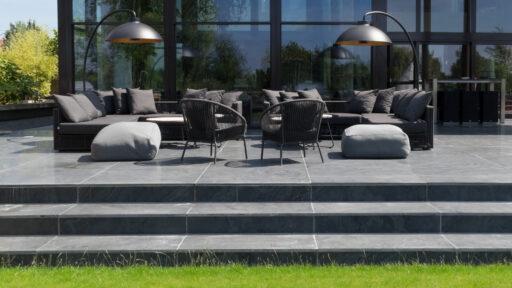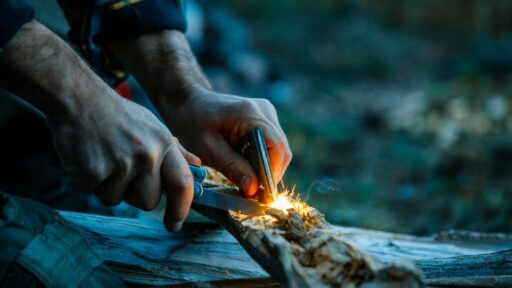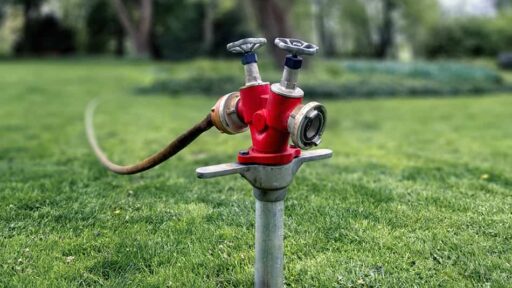Have you ever looked at a perfect lawn and wondered whether it’s real or fake? More people are now choosing between natural and artificial grass, and each option has its own pros and cons.
The choice you make can affect how much time, money, and care you give your yard. But which one is better for you?
In this blog post, you’ll learn how to compare artificial vs. natural grass to weigh costs, maintenance, durability, and environmental benefits. By the end, you’ll have a clear idea of which lawn option fits your needs, budget, and lifestyle best.
Understanding the Basics of Each Lawn Type
Before picking one, it helps to know what each type of grass is like. Natural grass is the real grass you see in most parks and yards.
It grows from soil and needs water, sun, and mowing. Artificial grass is made from plastic materials that look like real grass. It doesn’t grow, and it doesn’t need water or mowing.
People often choose natural grass because it feels soft, cool, and fresh. But it also needs regular care. On the other hand, artificial grass saves time and effort, but it can feel less natural to walk on.
Still, some high-quality types look and feel very close to the real thing.
Cost Matters More Than You Think
Money plays a big role when deciding on your lawn. Natural grass is cheaper to install at first. Seeds or sod don’t cost much, and they’re easy to put in.
But once it’s down, the costs keep adding up. You need water, lawn tools, fertilizer, and even pest control. Over time, these things cost a lot.
Artificial grass costs more to install at the start. The price includes materials and labor. But after it’s installed, you don’t have to spend much. It doesn’t need watering, mowing, or chemicals.
Over several years, many people find it actually saves money. So while it may cost more at first, it can pay off in the long run.
Time and Effort Add Up Fast
Maintaining natural grass takes a lot of work. You need to mow it every week, especially in summer.
You also have to water it often and deal with weeds and pests. Some people enjoy yard work, but for others, it becomes a chore.
Artificial grass is much easier to manage. It doesn’t grow, so you don’t have to mow. It stays green all year without watering. You may need to brush it now and then or spray it off if it gets dirty.
But overall, it takes far less time. If you have a busy life, this could make a big difference.
Durability That Lasts Through the Seasons
Weather can be tough on natural grass. Too much sun can dry it out. Too much rain can turn it muddy.
Cold weather can kill it. And if you walk or play on it a lot, it can wear down fast. Artificial grass holds up better. It stays green in sun or shade, and it doesn’t get muddy or dry.
It’s also good for pets and kids who run around. In places with extreme weather, like deserts, it can be a smart choice. For example, Artificial Turf in Las Vegas has become very popular because it stays green even in the heat and requires almost no water.
Environmental Effects You Should Know

Many people think natural grass is better for the earth. It gives off oxygen and can absorb heat. But it also needs a lot of water, especially in dry areas. Lawn chemicals can get into the ground and harm nature. Gas-powered mowers add to air pollution too.
Artificial grass does not use water and doesn’t need chemicals. It also cuts down on mower use, which helps the air stay cleaner. But it’s made from plastic, which comes from fossil fuels.
And even though it can last over a decade, it does need to be replaced at some point. Some brands now use recycled materials to make their turf, which is a better option.
Look and Feel Can Sway Your Choice
Some people love the look and feel of natural grass. It has a smell and texture that are hard to copy.
Kids can play barefoot on it, and it feels cool under your feet. But if you don’t care for it often, it can turn yellow, patchy, or muddy.
Modern artificial grass has come a long way. It looks much more real than it did in the past. Some people can’t even tell the difference until they touch it.
It stays green and neat no matter what. The surface can get warm in strong sun, but newer types are made to stay cooler.
Which One Fits Your Lifestyle?
Think about how you use your yard. If you love gardening, enjoy yard work, and have time to care for plants, natural grass may be a better fit. If you want a low-maintenance lawn that always looks neat, artificial grass might be better for you.
Pets and kids also matter. Natural grass is soft and fun to play on, but it can turn into dirt patches quickly.
Artificial grass handles rough play well and doesn’t wear out fast. Some types are even made with pets in mind, so they drain well and don’t hold smells.
Making the Best Choice for Your Yard
Choosing between natural and artificial grass isn’t just about looks. You have to weigh cost, care, durability, and even how your lawn fits the environment. Each one has its good sides and drawbacks.
For some, the fresh smell of real grass and the joy of working in the yard is worth the effort. For others, the clean, easy upkeep of artificial turf makes life simpler.
There is no one-size-fits-all answer. It depends on what you value most and how much time and money you want to spend.
Artificial Grass vs. Natural Grass: Weighing Costs and Benefits
In the end, the best lawn is the one that matches your needs and lifestyle. Natural grass brings a classic look and feel but needs a lot of care. Artificial grass may cost more at first, but it saves time and money in the long run.
Both choices can work well when used in the right way. By learning the facts and thinking about your own needs, you can make a smart decision that you’ll feel good about for years to come.
Did this guide help you? Browse the rest of this section for more advice on a variety of topics.








